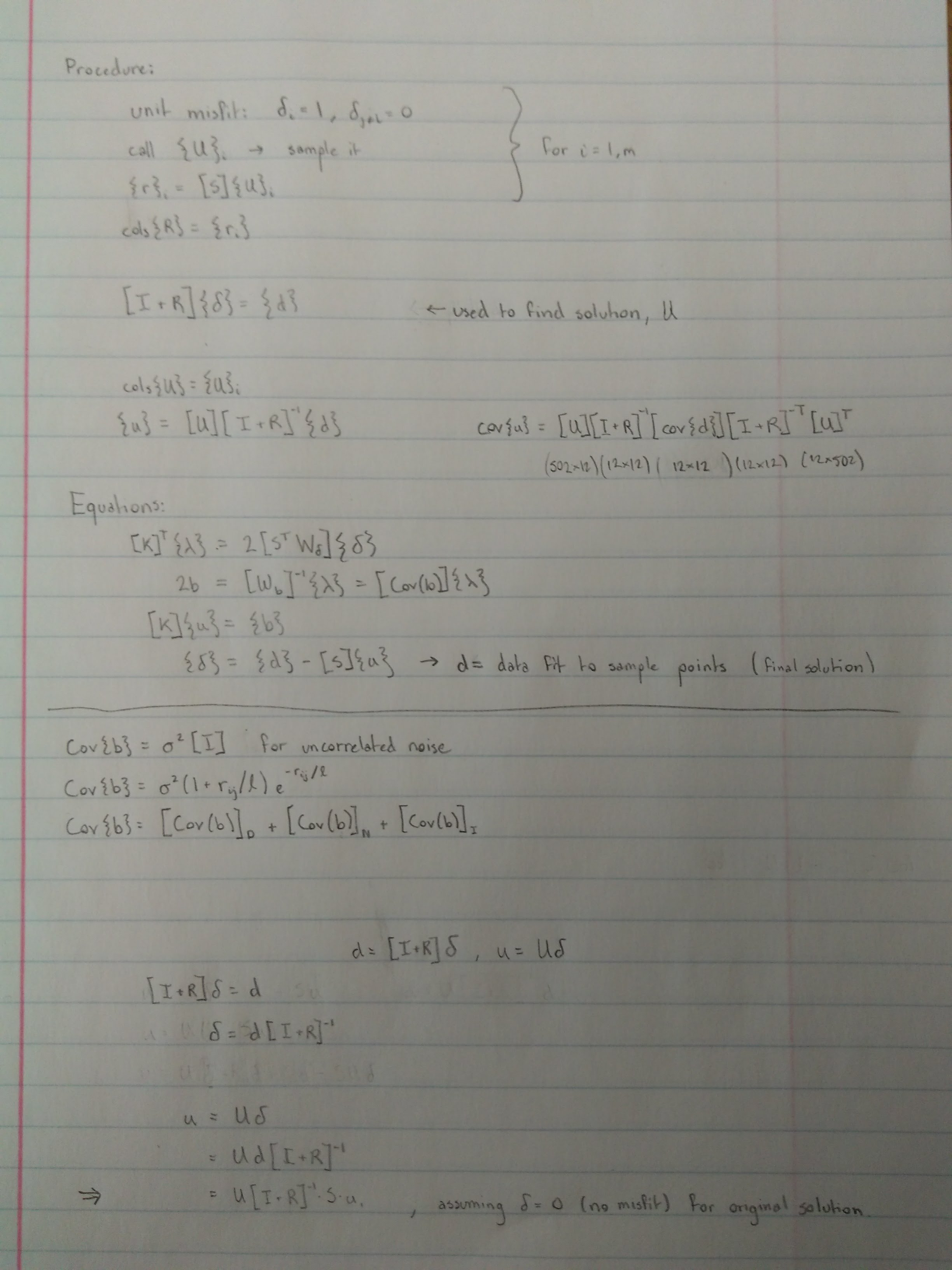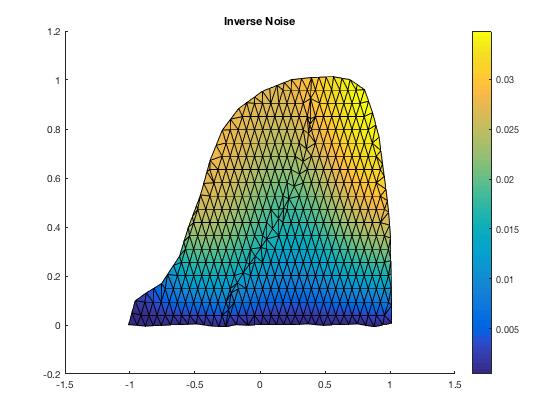Original Solution:
Part 1:
We sample the original solution from last week's homework at the given 12 locations:
- along Y=0.20: X=-0.6, -0.3, 0.0, 0.3, 0.6
- along Y=0.40: X=-0.3, 0.0, 0.3, 0.6
- along Y=0.60: X= 0.0, 0.3, 0.6
The sampled elements are found by using the built-in MATLAB function inpolygon. We build the sampling matrix S by looping through these elements and treating each iteration as a point source.
We then have d = [S]*u.
Part 2:
We use the Representer approach, which uses Lagrange multipliers. This method was chosen because the number of data m is much less than the number of unknowns n.
The following procedure was followed:
And the result:
Part 3:
rms_bias = 0.0726
rms_misfit = 0.0396
rms_dir = 0.0026
Part 4:
We find the inverse noise by taking the sqrt of the diagonal of Cov(u), where
Cov(u) = [U] * inv(I+R) * cov(d) * inv(I+R)' * [U]'




